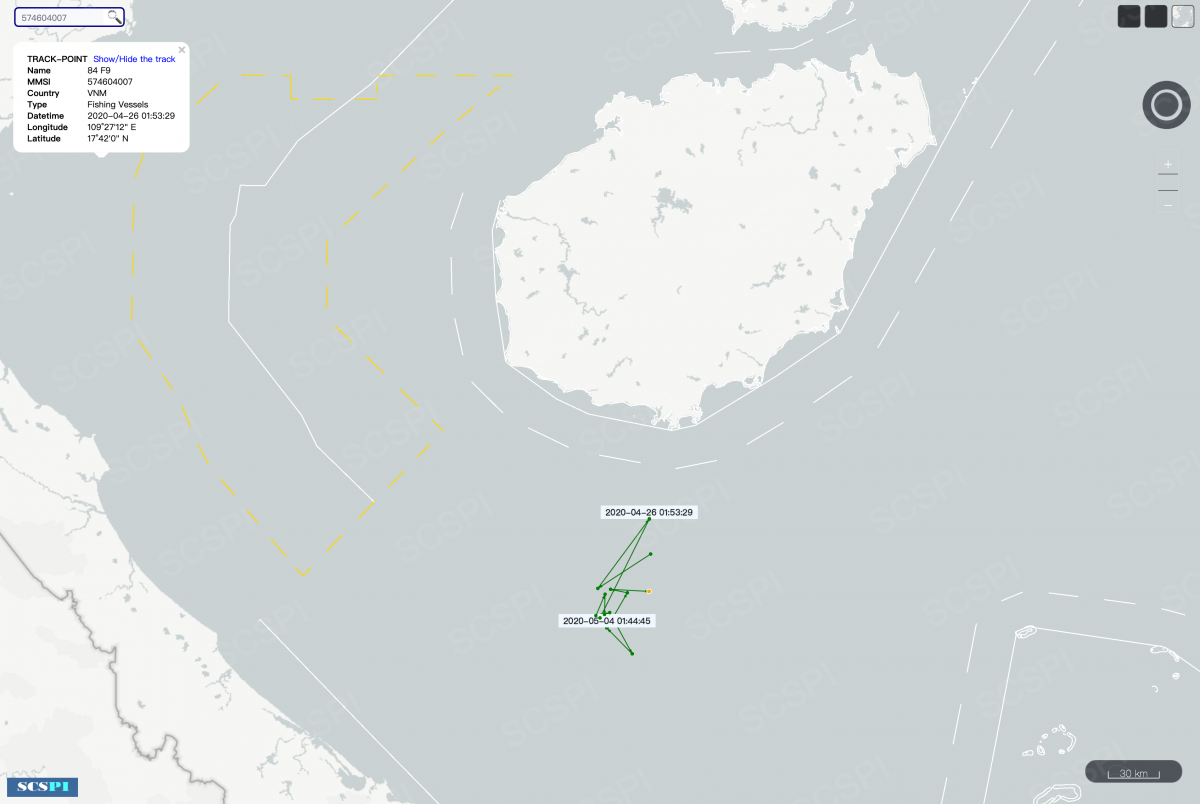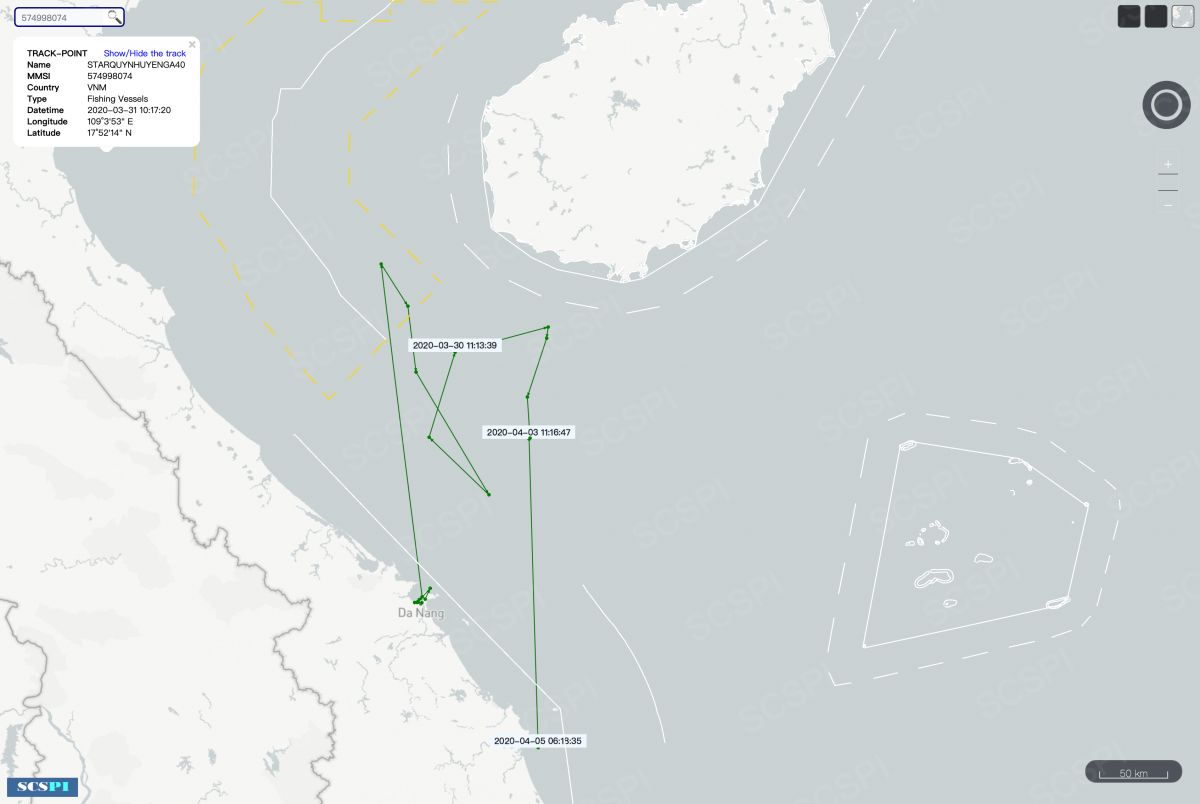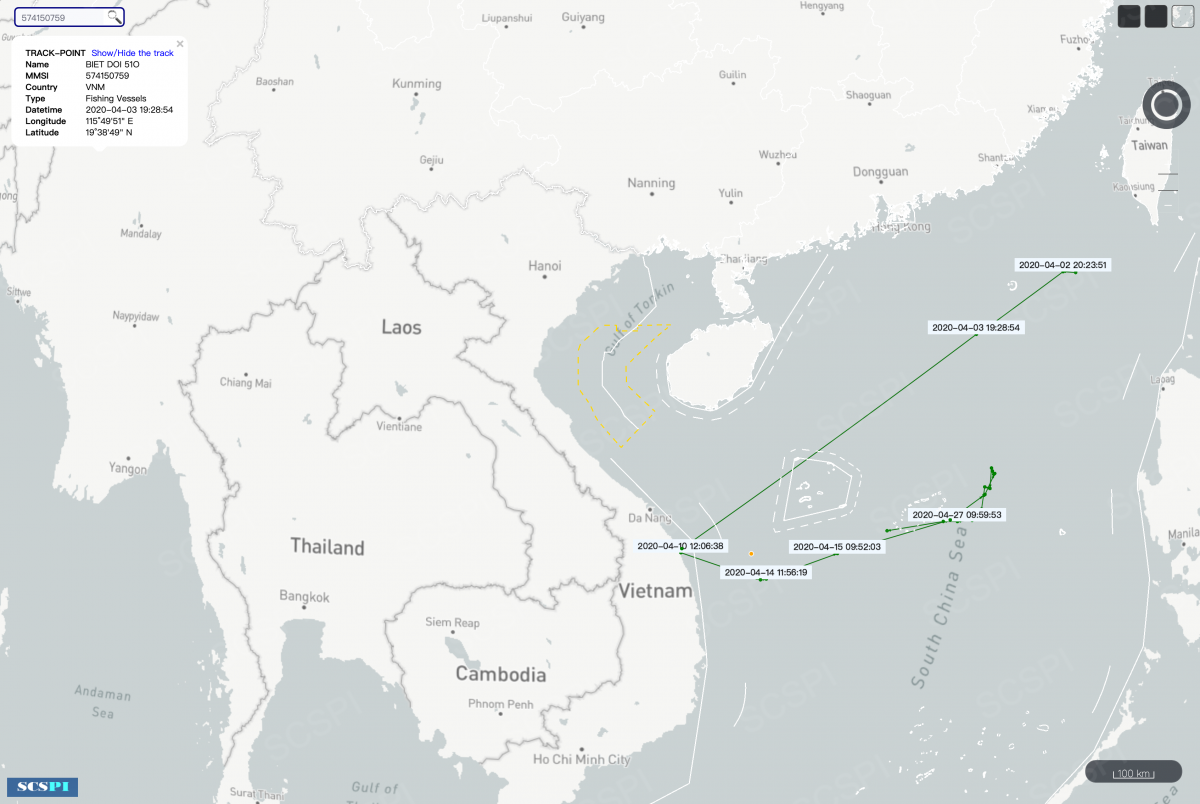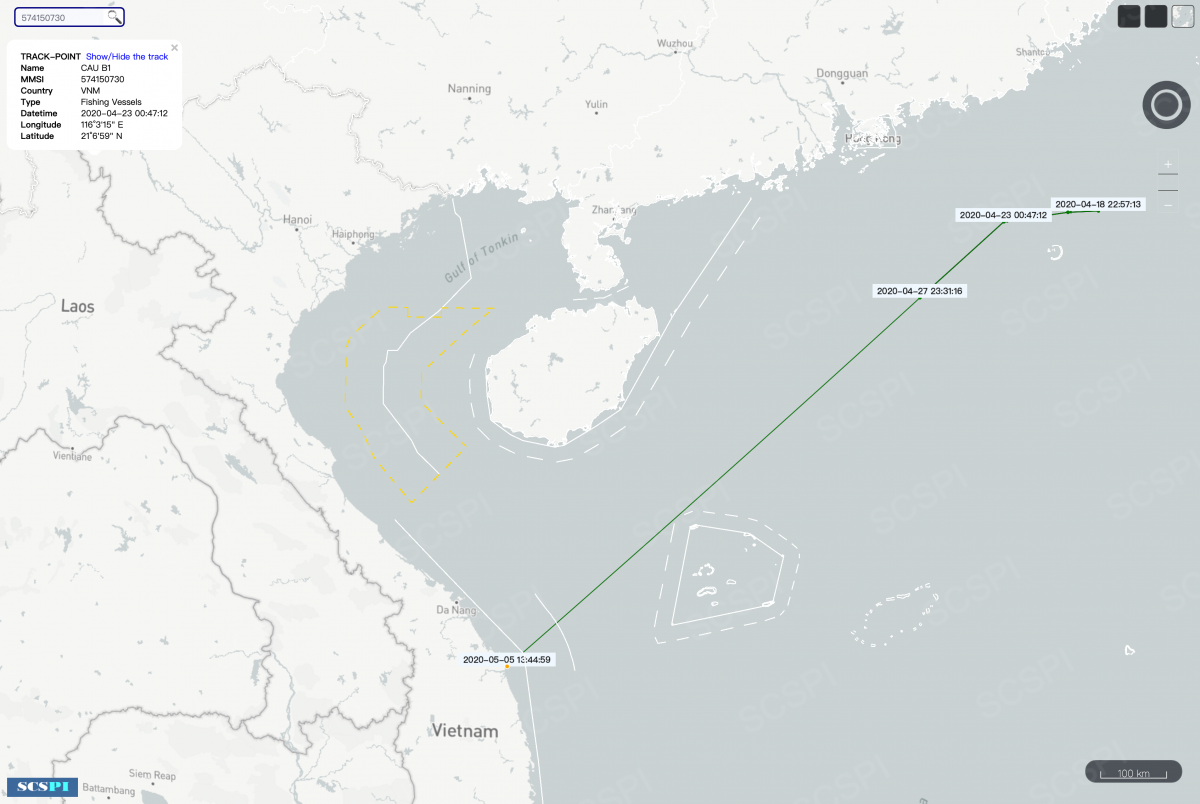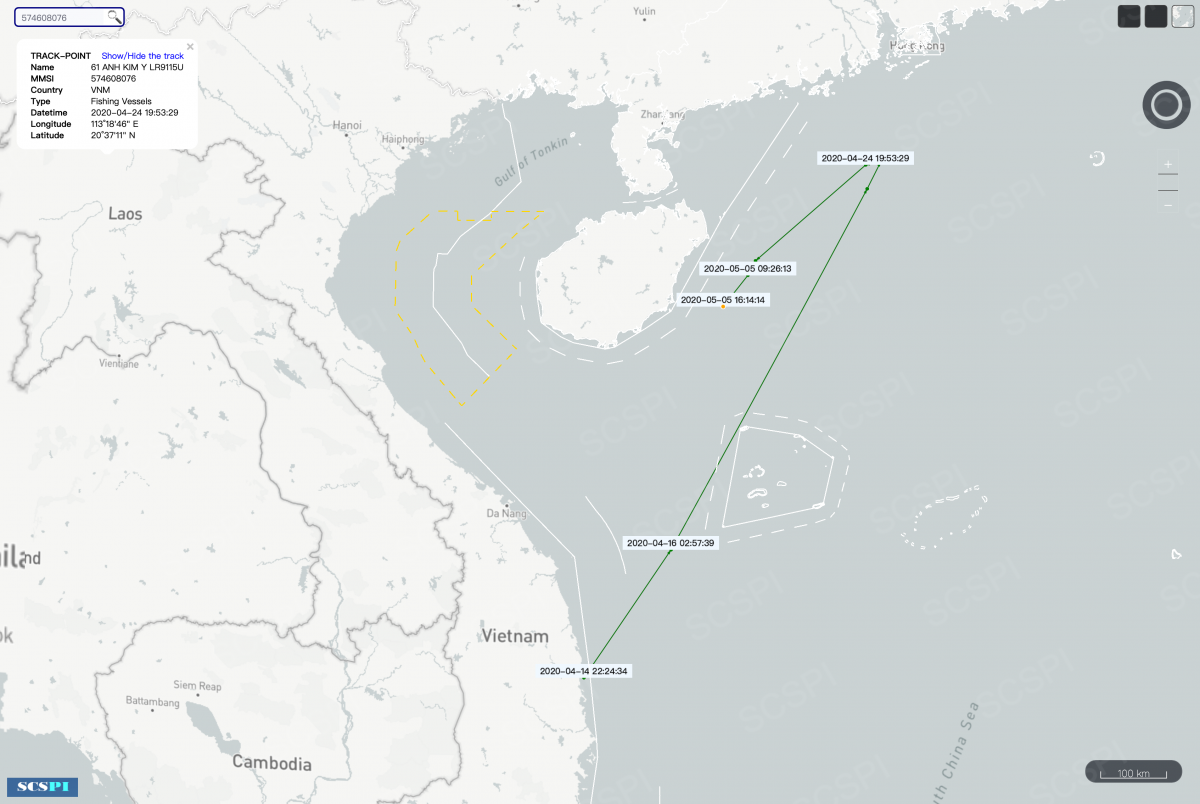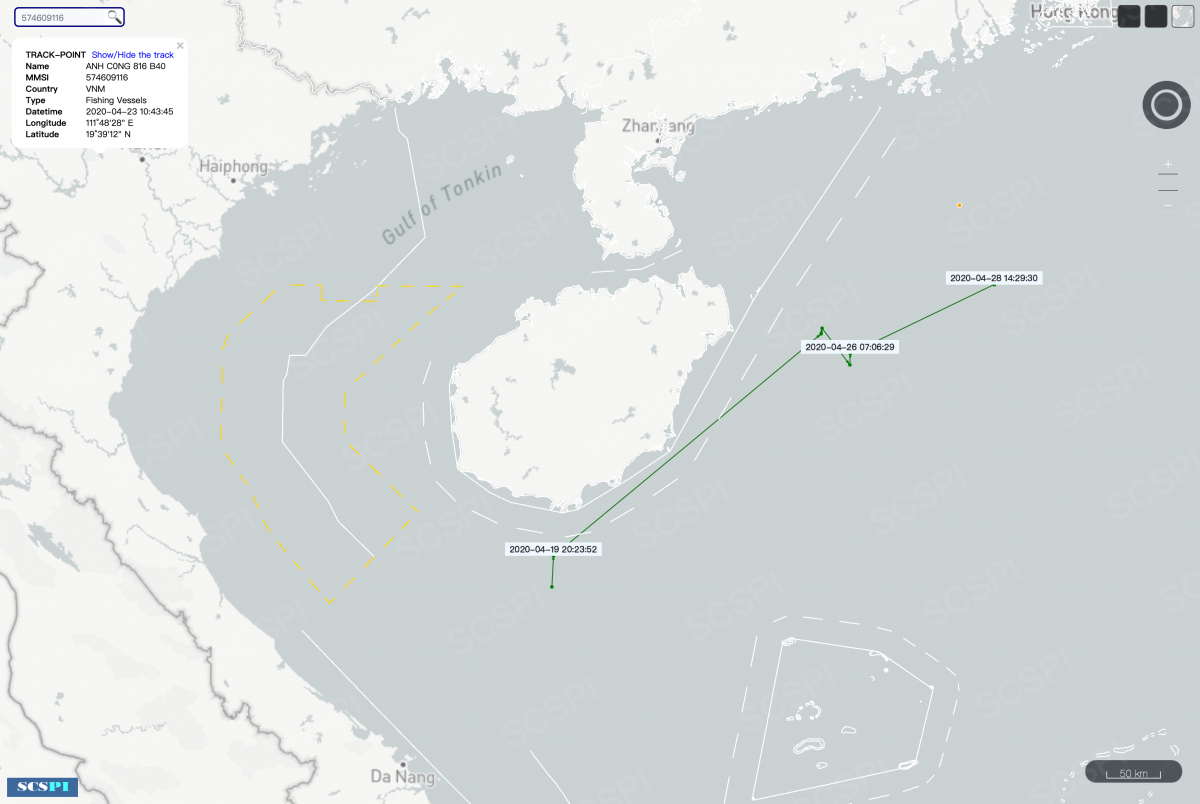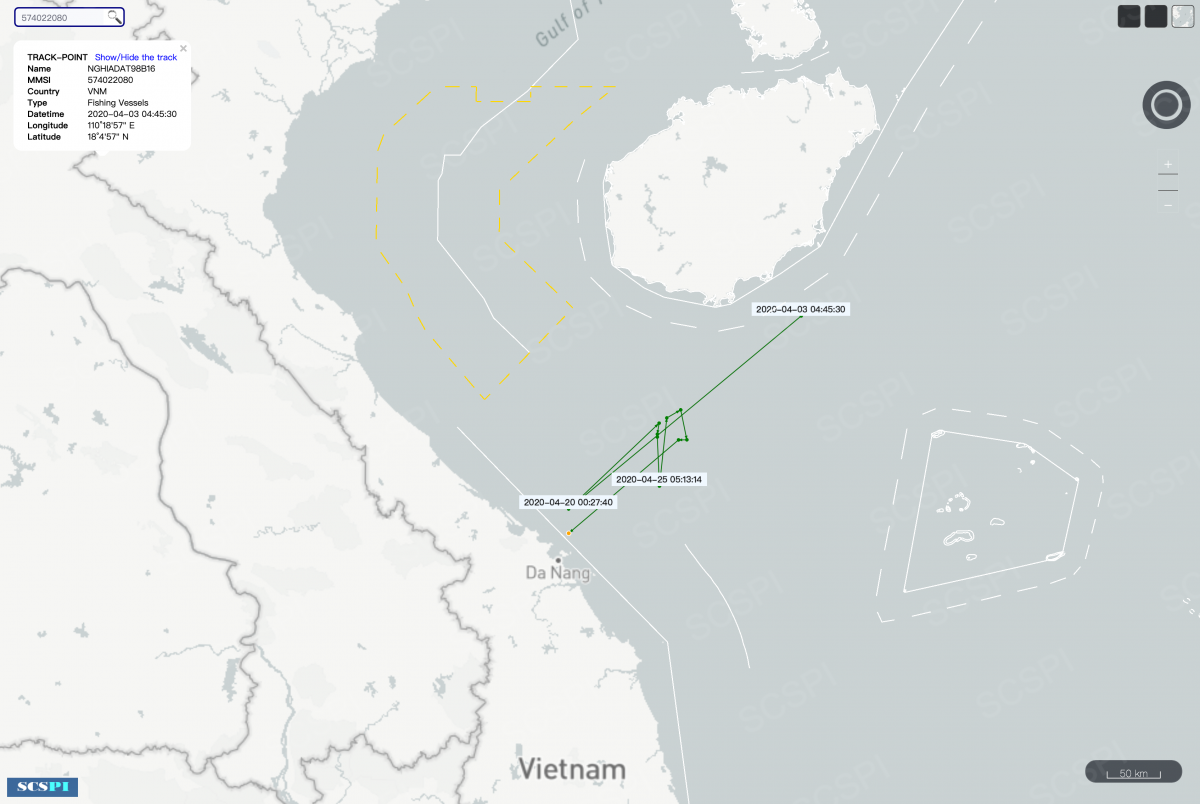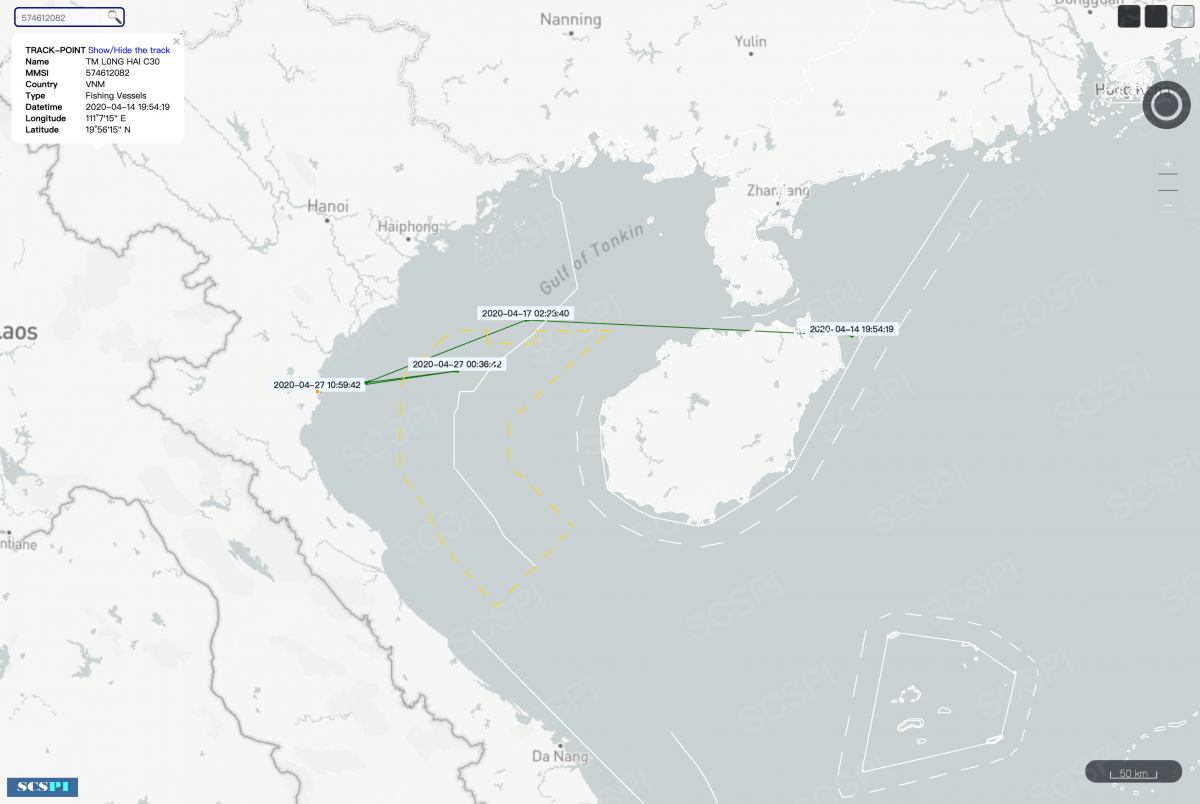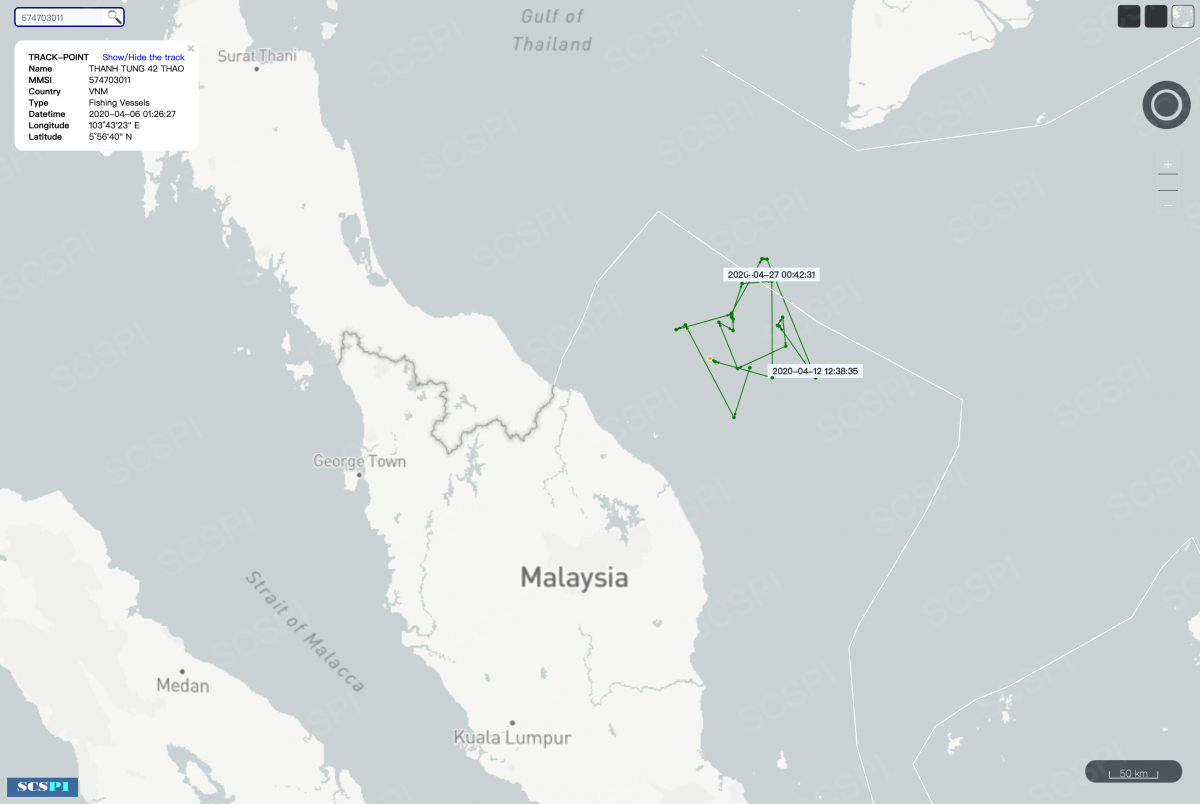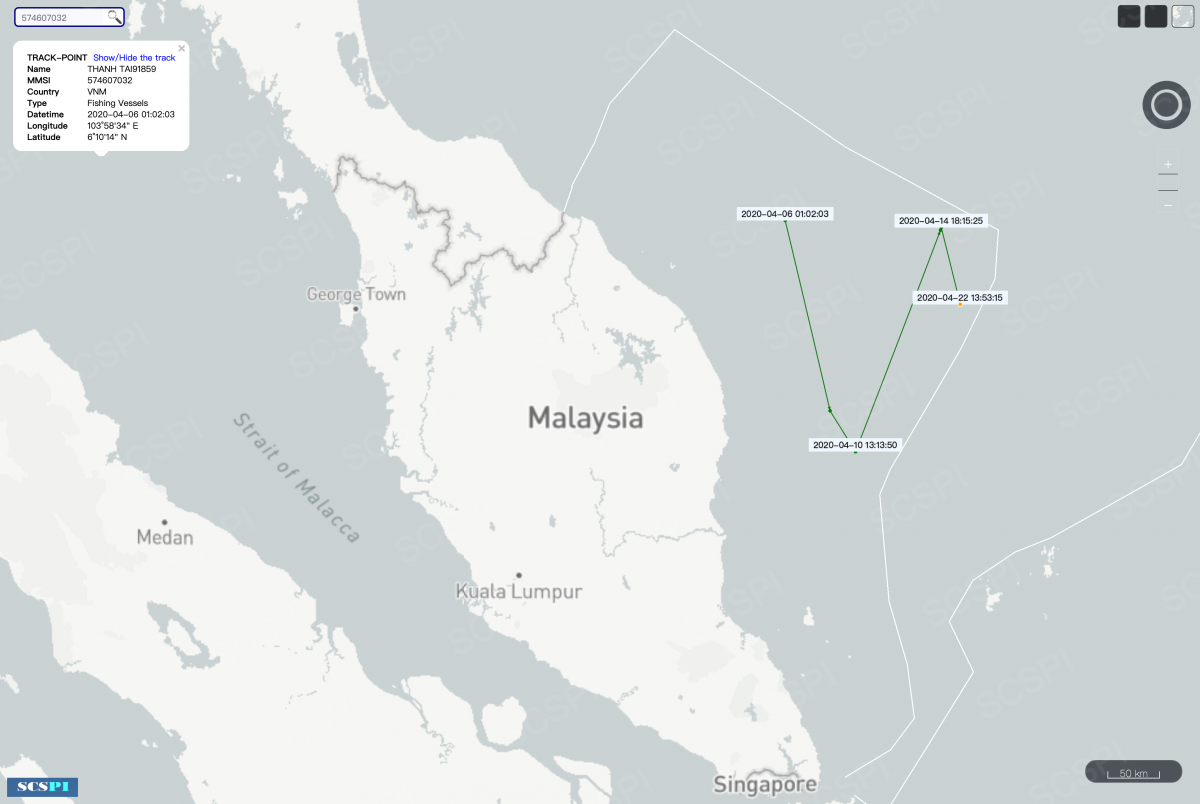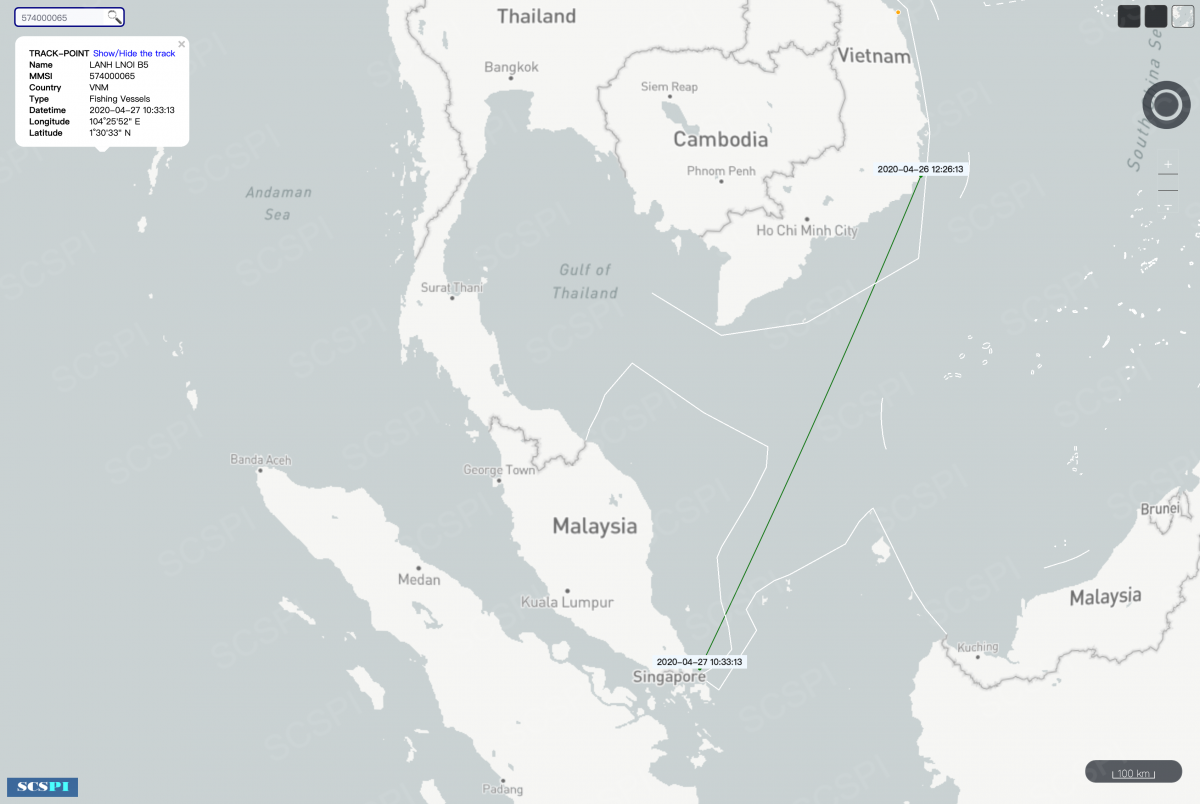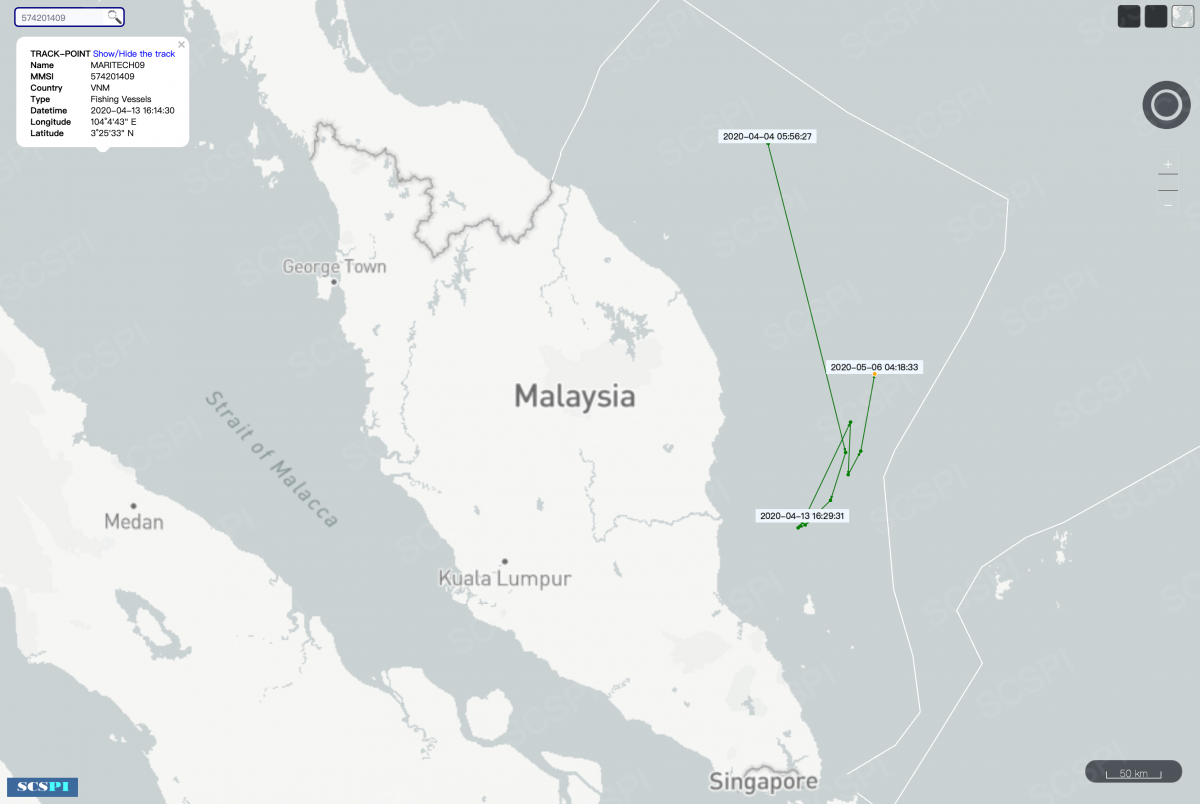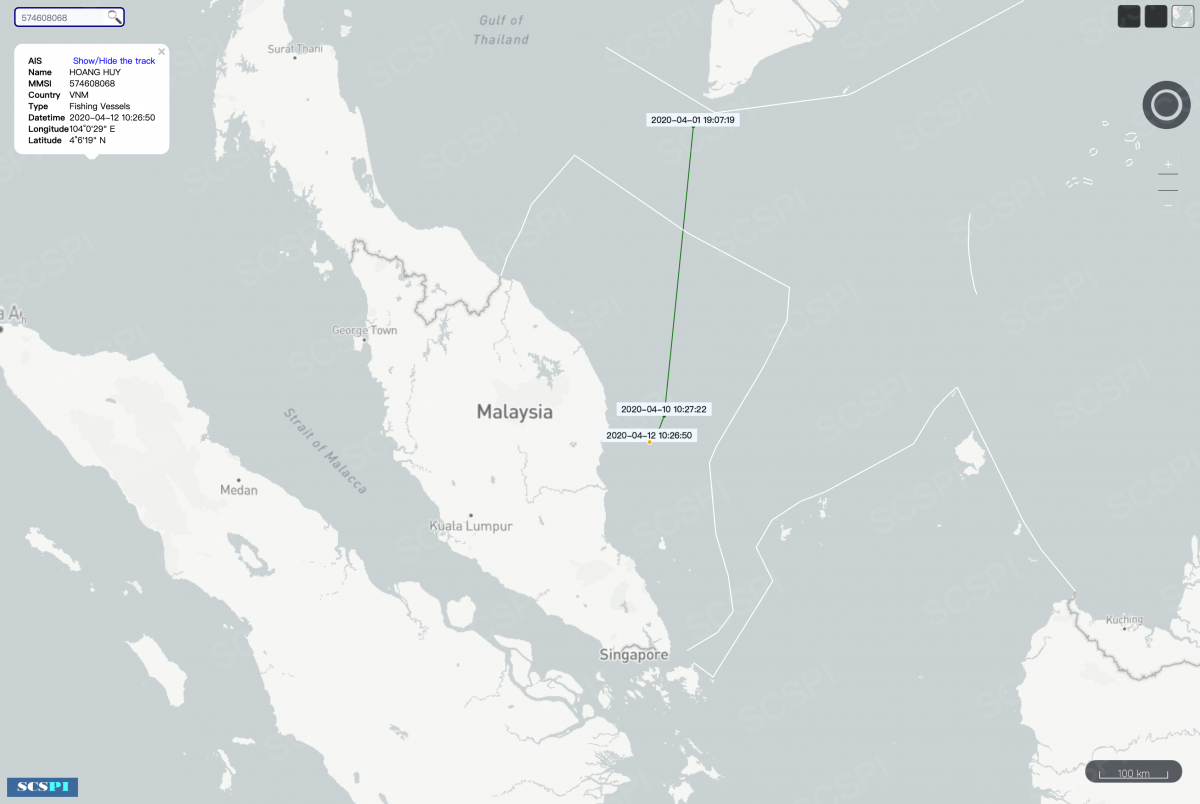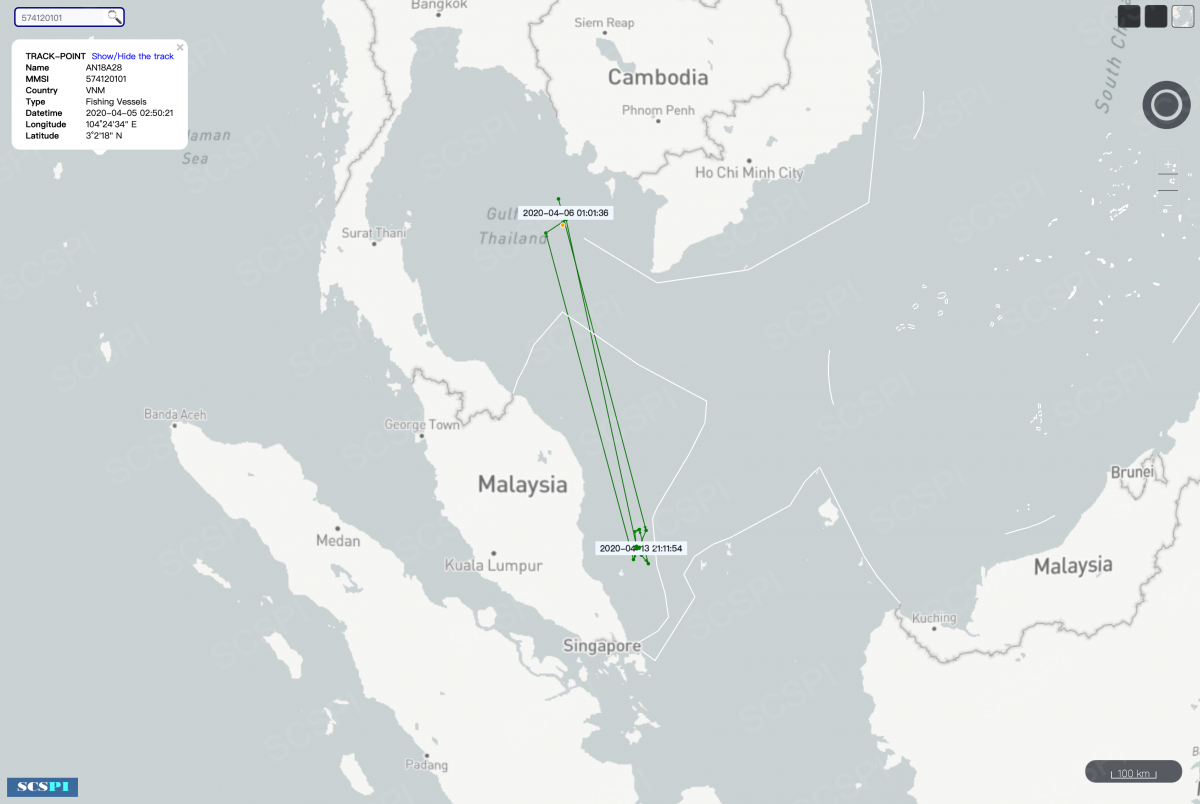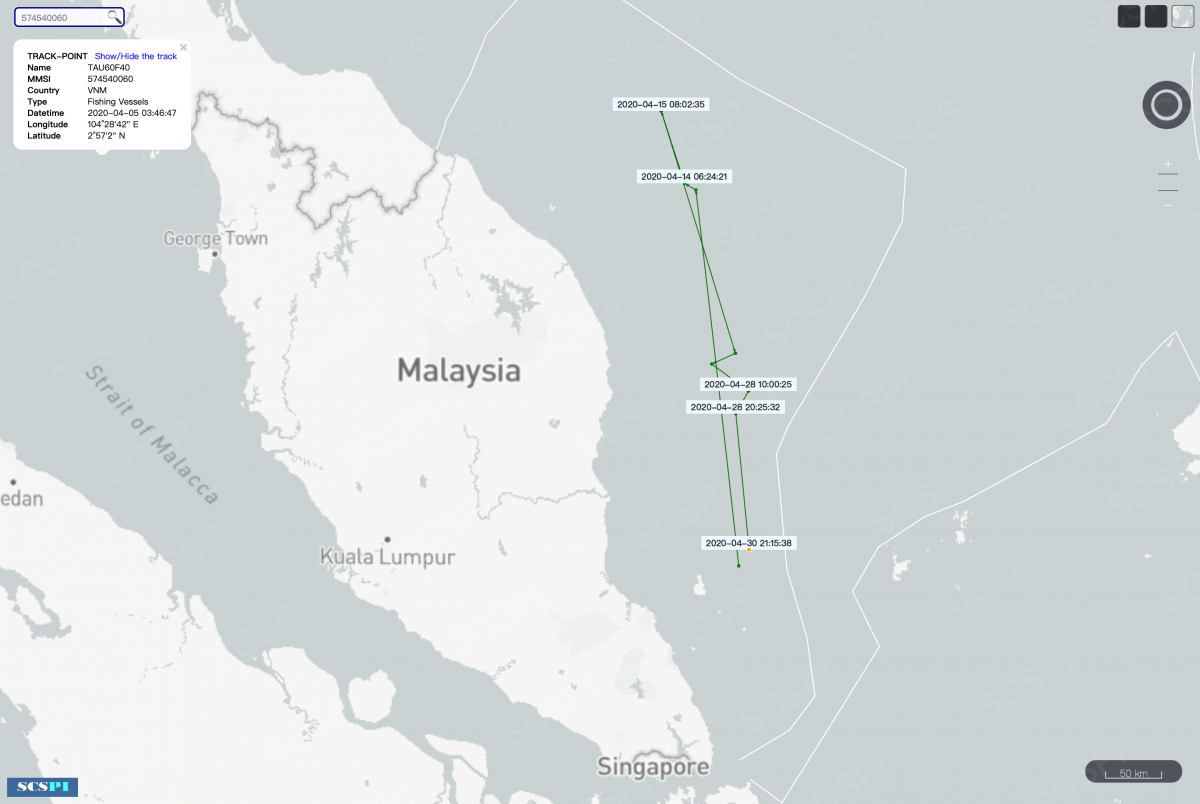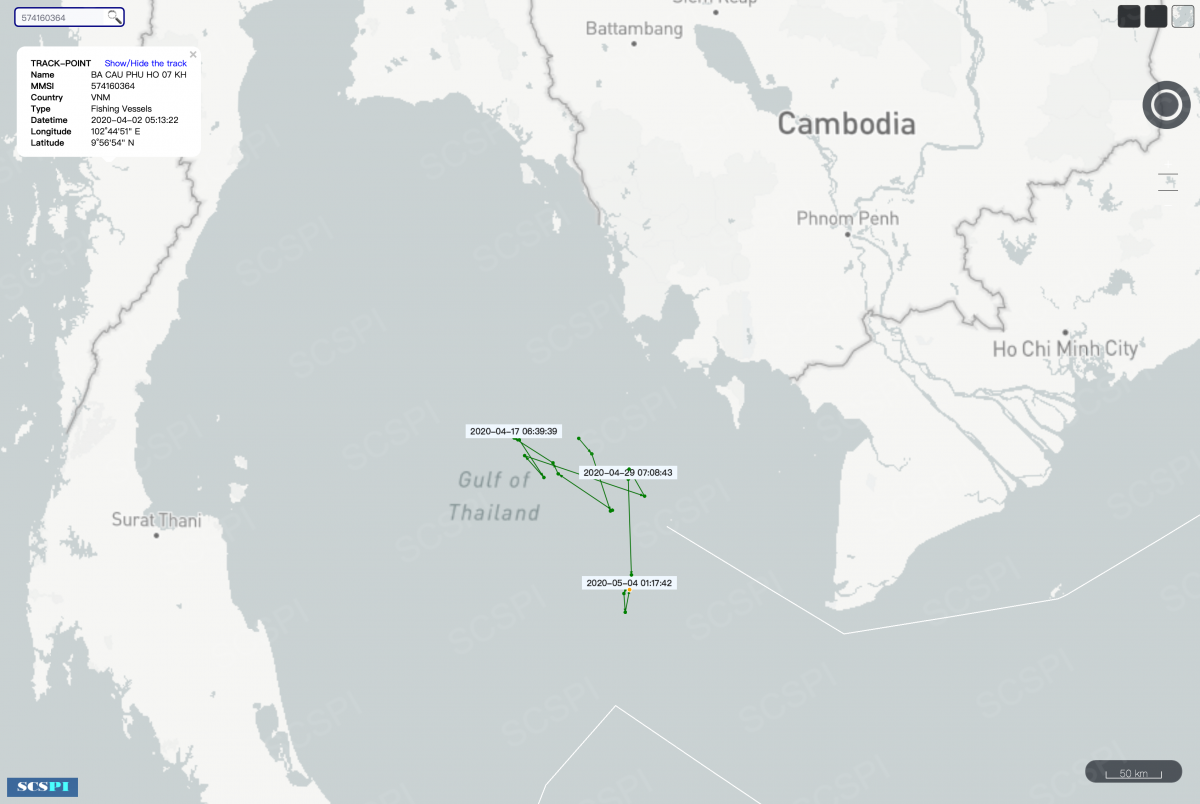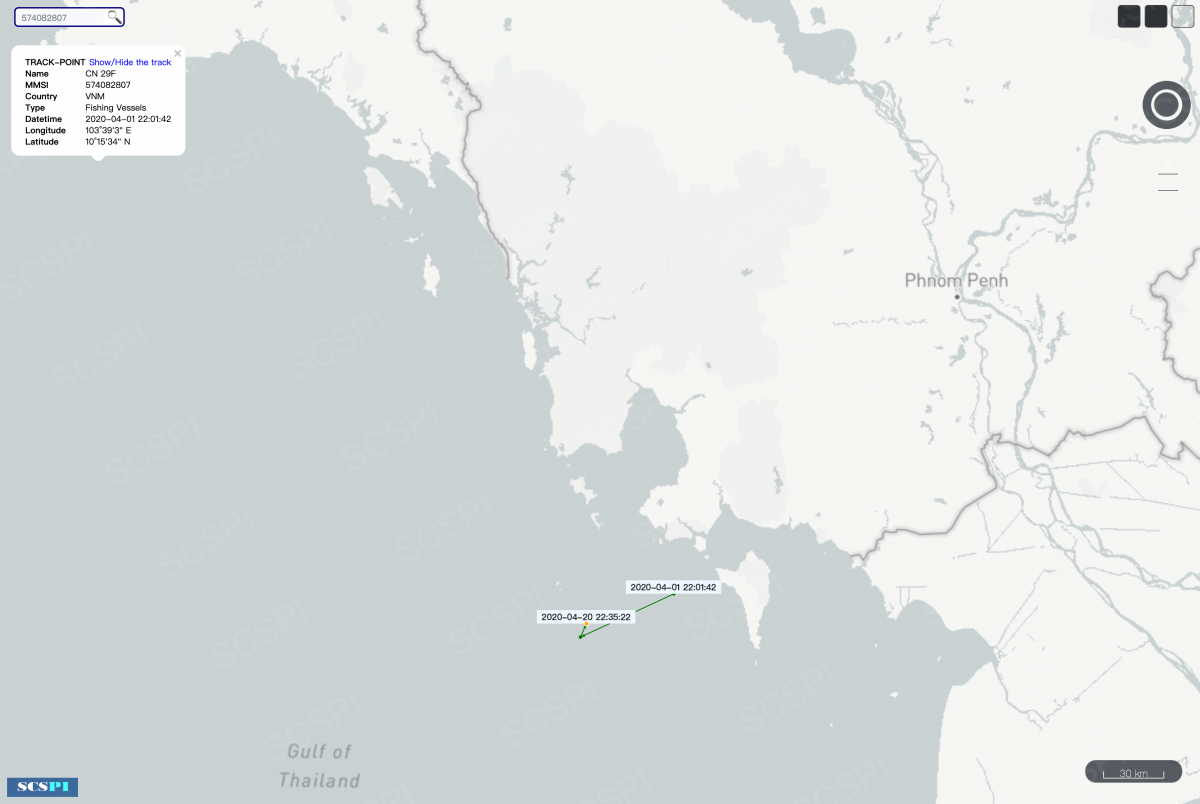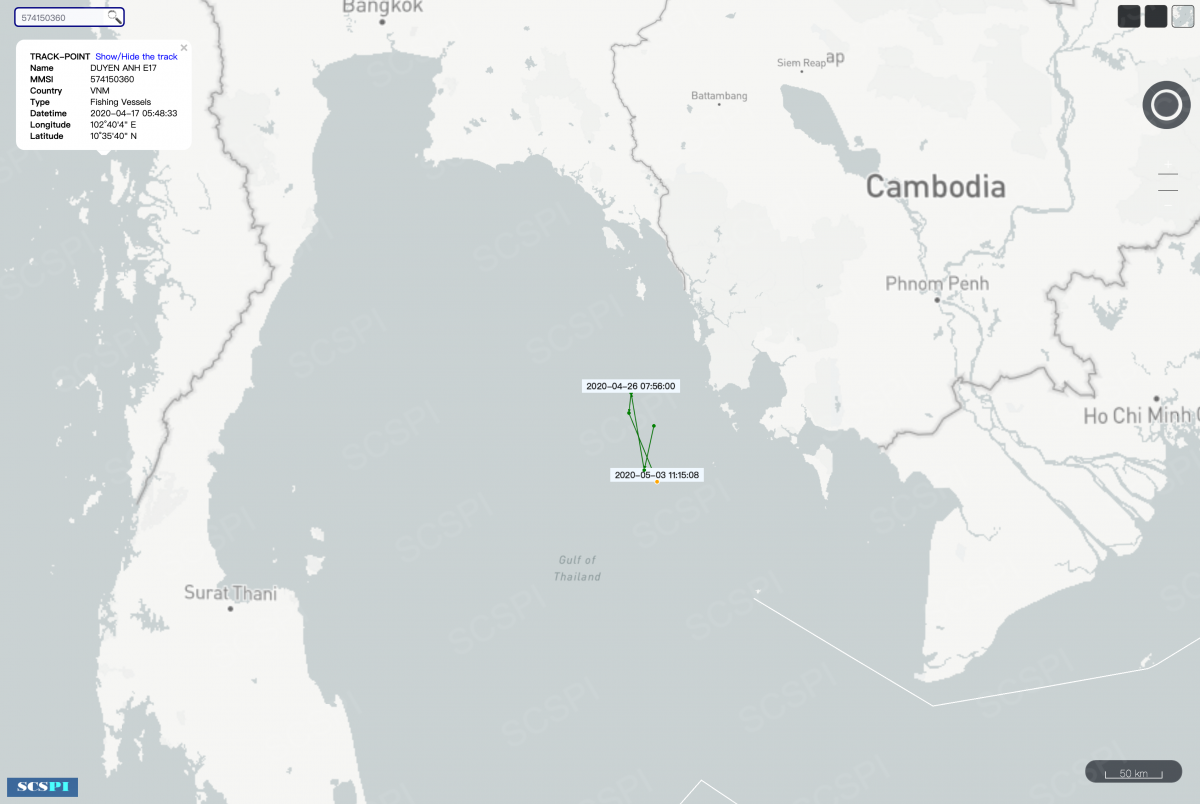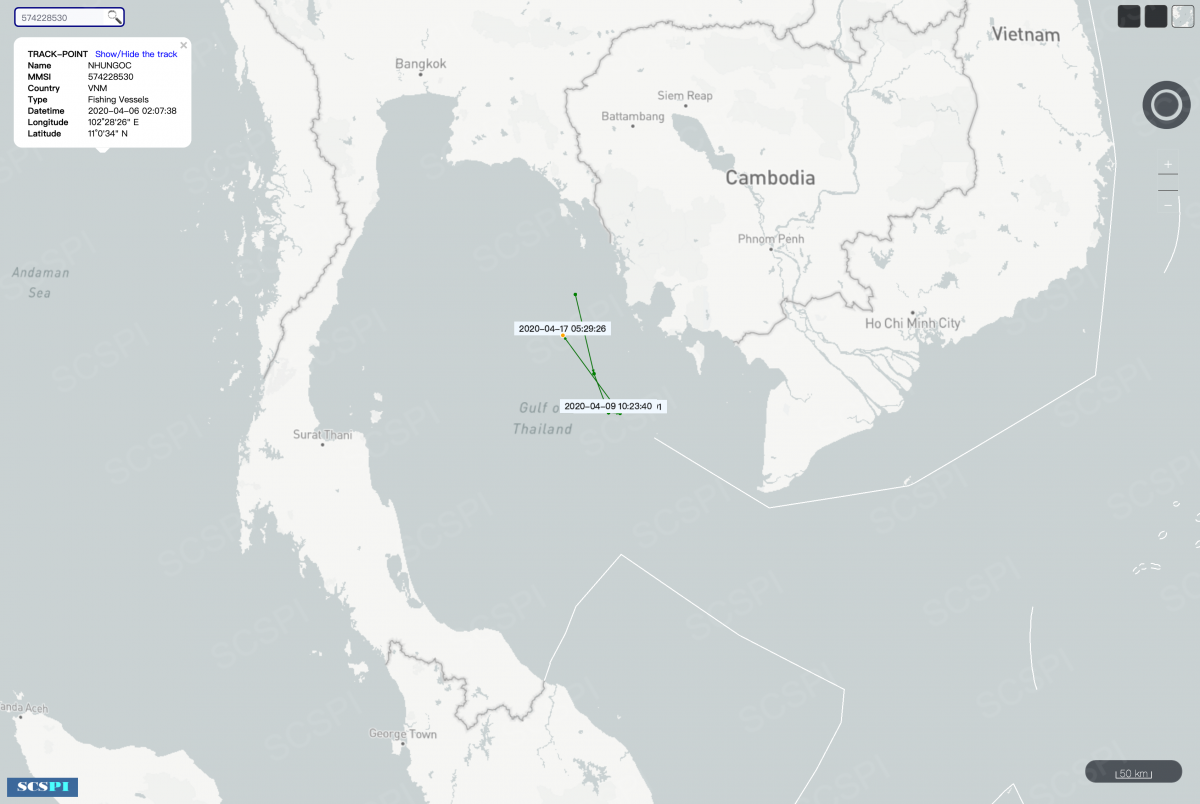In April, a total of 88,182 tracking points of 9,208 Vietnamese fishing vessels in the South China Sea including the Gulf of Thailand were recorded by AIS, basically stays static with that in March when 118,937 tracking points of 9,152 fishing vessels were recorded. The activities of Vietnam’s fishing vessels remain one of the most intensive in the South China Sea, no matter in terms of scope or quantity.
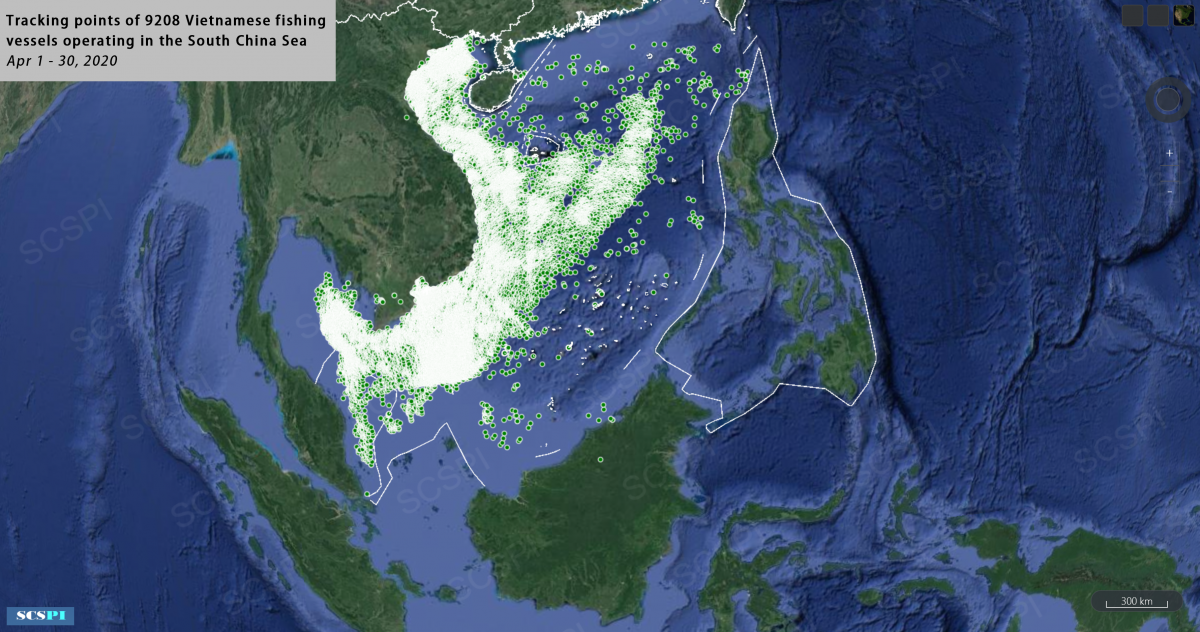
Tracking points shown in the figure above also contain normal activities of Vietnamese fishing vessels within their own waters, which is legally blameless. Beyond this, many of them do have intruded into waters of China, Malaysia, Indonesia, Cambodia and the Philippines which are clearly non-disputed between Vietnam and these countries.
Moreover, as it’s often noted, there still is a great deal of Vietnamese fishing vessels left unrecorded by AIS, many of whose vessels are even not equipped with AIS transponders. What’s even worse, no single piece of information is found for some vessels in internationally acknowledged AIS databases, let alone AIS signals, as in the cases of the Paracel incident on April 2, where a Vietnamese fishing vessel rammed a China Coast Guard vessel, and the incident on April 19 where another Vietnamese fishing vessel collided with an Indonesian law enforcement vessel.
Chinese Waters of Hainan Island and Beibu Gulf
In April, at least 379 Vietnamese fishing vessels have intruded into the waters of the Beibu Gulf on the Chinese side (excluding those operated in the Sino-Vietnamese common fishery zone), the territorial seas and internal waters of Hainan and Guangdong, as well as the area within 30 nm of the exclusive economic zones (EEZs) of Hainan’s southeastern waters. This is a significant drop compared with that in March, which is 511.
Specifically, around 21 fishing vessels intruded into China’s territorial seas and internal waters, demonstrating a nearly 50 percent decline from the figure 40 in March, which is a possible result of intensified law enforcement efforts by China.
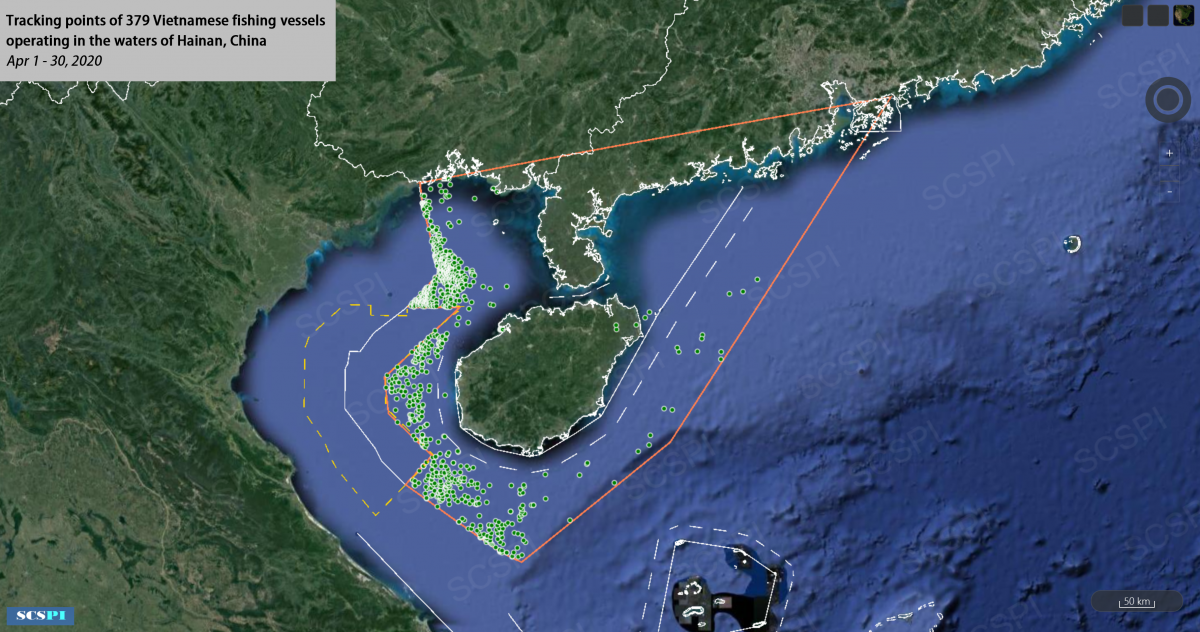
Download full AIS records of 379 Vietnamese fishing vessels here
Part of the Waters of Malaysia and Indonesia
A total of 474 Vietnamese fishing vessels were tracked to have intruded into the waters of West Malaysia and waters near the Natuna Islands of Indonesia, most of which gathered near the boundary line of territorial seas delimited by the Malaysian government.
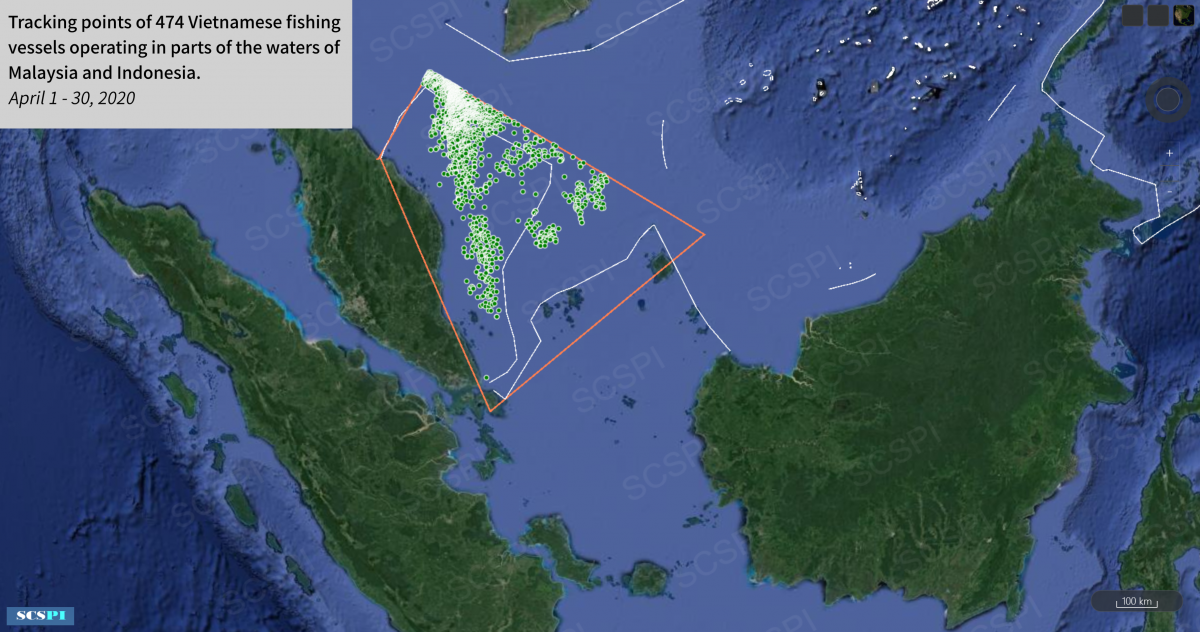
Download full AIS records of 474 Vietnamese fishing vessels here
Vietnam has been long tangled with Malaysia and Indonesia in these waters. Vessels of these three countries would run into collision almost every year. One specific incident happened on April 19, 2020, when three Vietnamese vessels conducted illegal, unreported, unregulated (IUU) fishing in the boundary waters of Malaysia and Indonesia. One rammed an Indonesian law enforcement vessel and sank with its four fishermen missing, and the other two were detained by Indonesia.
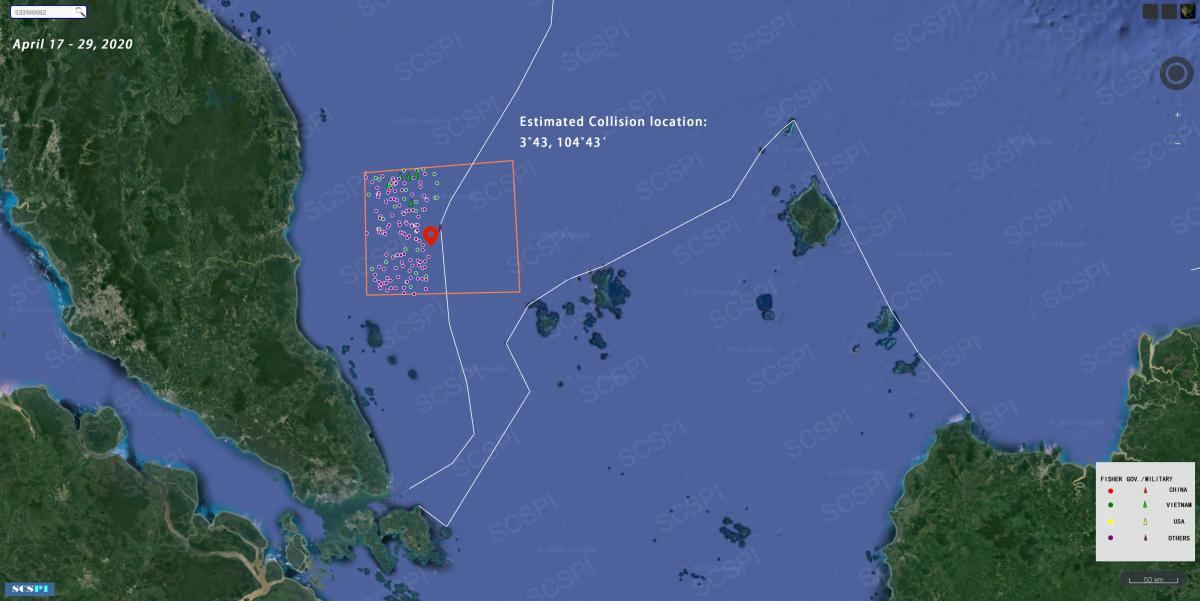
Illustration map of the incident on April 19, 2020
Another happened on April 25, 2019 seemed to be more intensive, involving one Indonesian Navy warship and two Vietnamese coastguard vessels, identified as KN 264 and KN 213, belonging to Vietnam's Fisheries Department. According to a statement released by the Indonesian Navy on April 28, 2019, when Indonesian Navy war ship KRI Tjiptadi-381 started towing the IUU fishing boat, the Vietnamese coastguard vessel KN 264 hit the Indonesian warship, while KN 213 bumped the fishing boat to sink it into the water.
Now, both Malaysia and Indonesia are adopting tough law enforcement against Vietnamese IUU fishing vessels.

Officials from Malaysian Maritime Enforcement Agency (MMEA). Credit: New Strait Times
Data revealed by Malaysian Maritime Enforcement Agency (MMEA) show that, Malaysia has detained, within no more than half a year, 184 Vietnamese fishing vessels along with 1,600 Vietnamese fishermen for IUU fishing activities from May to late November 2019.
As for Indonesia, the government has adopted stringent law enforcement against foreign fishing vessels since 2014, including detaining, sinking boats, and firing warning shots. In most cases, the targeted are Vietnamese fishing vessels.
Waters of Cambodia
Besides, a total of 240 Vietnamese fishing vessels intruded into the waters of Cambodia in the Gulf of Thailand in April.
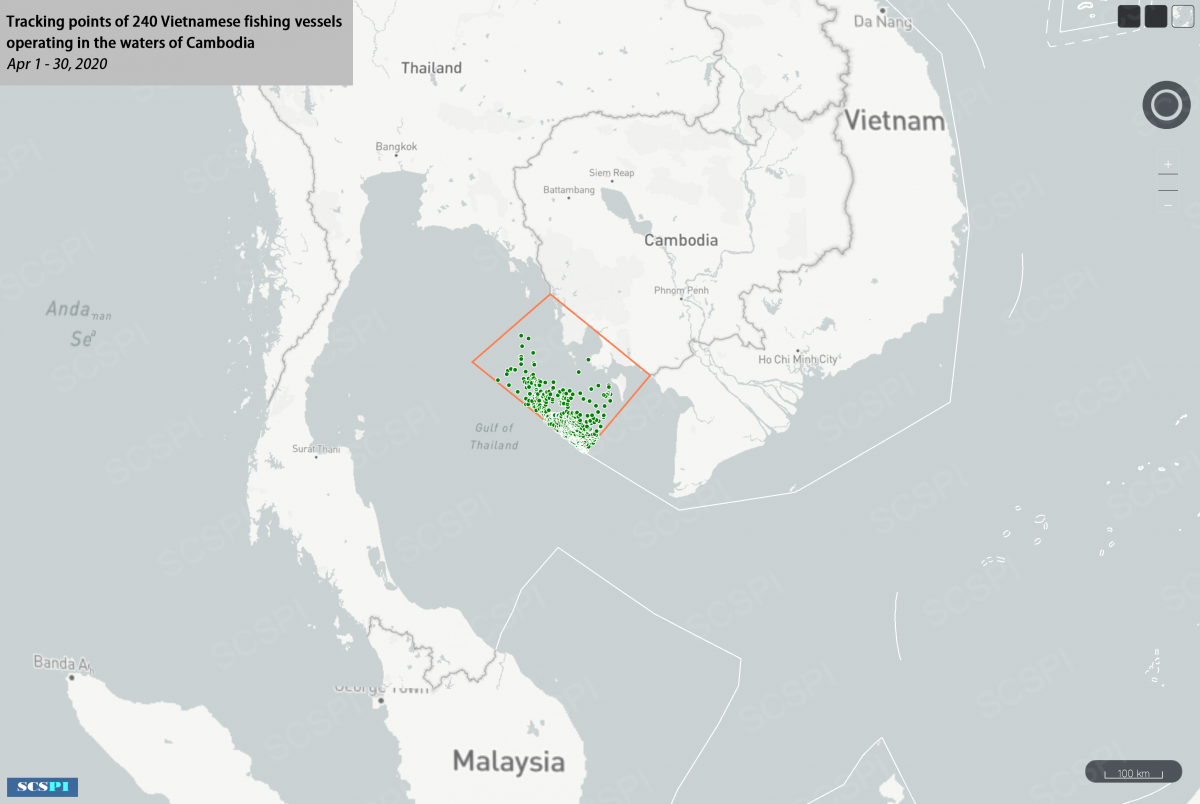
Download full AIS records of 240 Vietnamese fishing vessels here
The Vietnamese government has asserted several times that they would step up efforts against IUU fishing activities, however, marked improvements have not been seen yet.
Given the critical situation of Vietnam’s fishery industry’s overcapacity, it is, with no doubt, challenging for the Vietnamese government to enforce effective regulation.
But another reason lies in the fact that many fishing vessels currently become policy tools for the country as “forward-deploy forces” to exploit fishery resources and intensify maritime claims in disputed areas. In this sense, it is unlikely that the Vietnamese government be determined to crack down on IUU fishing activities.
Appendix
Tracks of 20 typical Vietnamese fishing vessels in April, 2020
